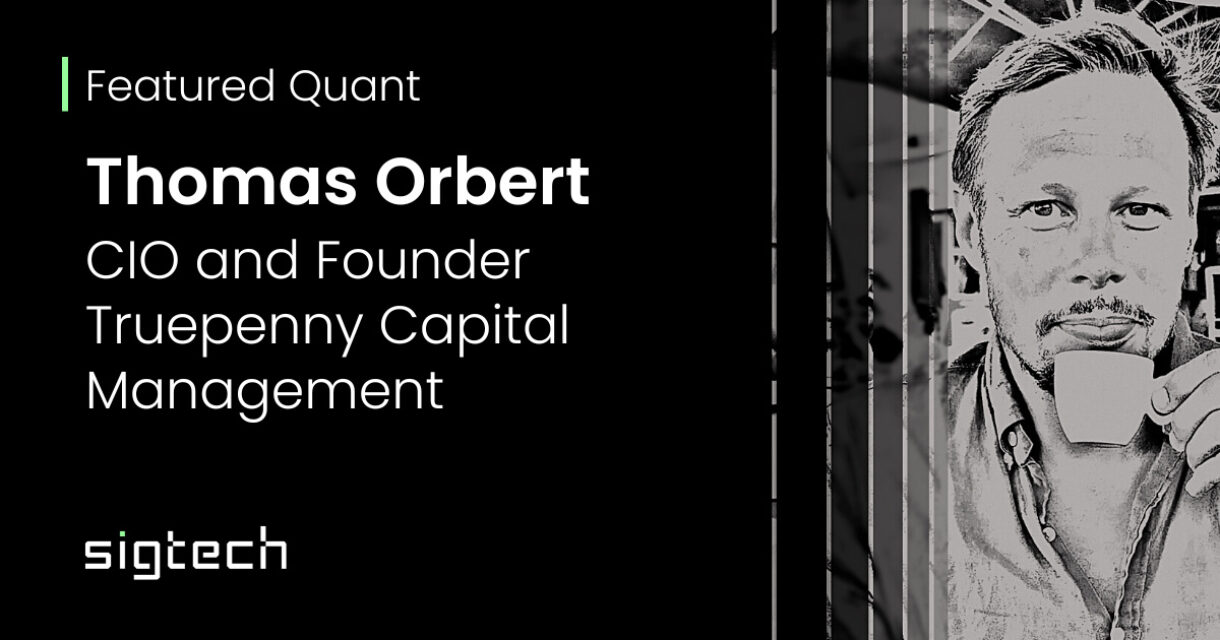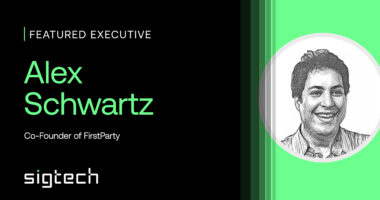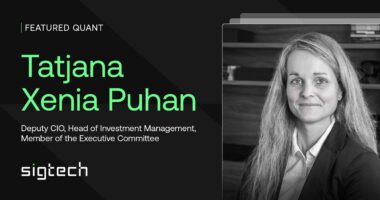In this, our first edition of SigView, we have the pleasure of speaking with Chief Investment Officer Thomas Orbert. In 2020, Thomas, after a 20+ year career as a quant researcher and portfolio manager at leading banks and hedge funds, founded Truepenny Capital Management. Truepenny applies a fully systematic investment process based on a unique universal pricing methodology emerging from Thomas’ expertise and long-term track record managing macro strategies with an inflation focus.
We hope you enjoy the conversation.

Tell us about your role at Truepenny?
I am the founder and CIO of Truepenny Capital Management. As an emerging manager, my role at Truepenny encompasses most parts of the traditional value chain of a quantitative investment manager. I spend most of my time researching new and enhancing existing trading strategies, expanding upon our general investment framework, and overseeing day-to-day portfolio management. I also spend time speaking with investors.
What kind of investment strategies do you manage? What markets do you research and trade?
We are in the final phase of launching the Truepenny Global Macro fund whose objective is to offer investors stable risk and a true inflation hedge. The fund mainly trades liquid exchange traded bonds, equity index futures and options, and global inflation products. Within our investment universe we apply a diverse set of trading strategies, ranging from fully systematic proprietary asset allocation and relative value strategies to model-based macro strategies focused on inflation risks.
What is unique about your quant models and investment strategies?
I think it fundamentally boils down to the combination of our two sub-strategies. One strategy is based on the in-house developed framework Affine Market Theory (AMT) and the application of a unique universal pricing approach across all liquid asset classes. This results in a very stable return generation. The second strategy is more of a traditional macro relative value strategy that focuses on inflation. The two strategies are uncorrelated and the combination creates a stable and less exposed set-up which sets us apart from our peers. Added to that is my experience and expertise from 20 years researching and capitalizing on inflation risk.
What are the key challenges you face in your day-to-day operations as a quant researcher and portfolio manager?
The two key issues for us are resource constraints and speed. Being an emerging manager we have a limited budget, while having a need to move forward fast. We are extremely mindful about prioritizing our core activities of research and portfolio management and ultimately of generating true value for our clients. To achieve this goal we have decided to outsource most of our non-core activities to third-party specialists.
Are there any specific datasets that you currently find particularly interesting to research?
We like to look at market price data in different ways rather than at alternative data in the same way. This means we build our own proprietary and tradeable datasets that we scrutinize and analyze from all kinds of perspectives. We are also very keen on digging deep into the specific details of inflation data and changes to various monetary measures, as well as market liquidity data.
Where do you see the most promising opportunities to generate alpha in the current market environment?
Being on top of and able to trade inflation risks, both on the up- and downside, is key to consistent alpha generation in the current market environment. I also see traditional fixed income relative value having a revival.
In general, I think the current environment calls for a certain amount of fidelity to a single investment process, while retaining enough degrees of freedom so as to profit from an increasingly large opportunity set. I also want to point out that I believe that experience from trading multiple market cycles will be key. Success in this more volatile environment requires traders to be faster moving and better able to adjust to new market regimes. This is a different environment to the one we have experienced in recent years.
How are you finding the current fundraising environment?
Fairly easy, but at the same time hard. Our main investment strategy fits the current market narrative very well and addresses some of the major challenges investors are facing. This makes it fairly easy to initiate discussions with institutional investors. However, as we bring a new twist to a traditional macro hedge fund strategy, it requires a couple of iterations to get firm capital commitments. But we are confident we will be able to meet our fundraising targets and launch our fund in Q1 2023.
What is next in terms of your investment strategies as well as on the technology and data side?
Our main focus currently is finalizing the preparations for our fund launch. This includes implementing portfolio management and execution management systems as well as building the necessary APIs. On the data side, we plan to start reviewing various volatility datasets to complement our existing data. In terms of research we have a full pipeline and in the near term we will focus on applying machine learning techniques to our proprietary tradable datasets.
Disclaimer
SigTech is not responsible for, and expressly disclaims all liability for, damages of any kind arising out of use, reference to, or reliance on such information. While the speaker makes every effort to present accurate and reliable information, SigTech does not endorse, approve, or certify such information, nor does it guarantee the accuracy, completeness, efficacy, timeliness, or correct sequencing of such information. All presentations represent the opinions of the speaker and do not represent the position or the opinion of SigTech or its affiliates.




